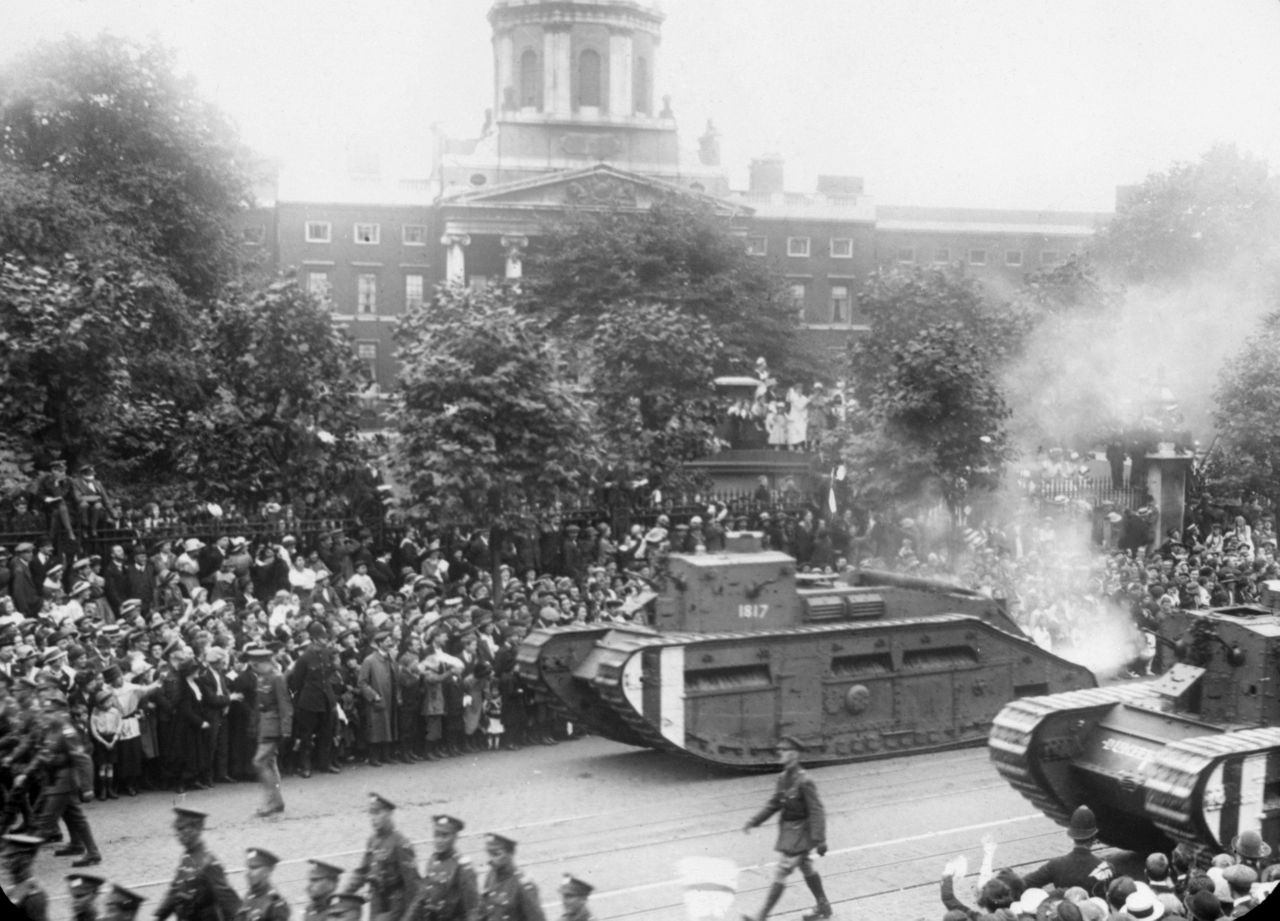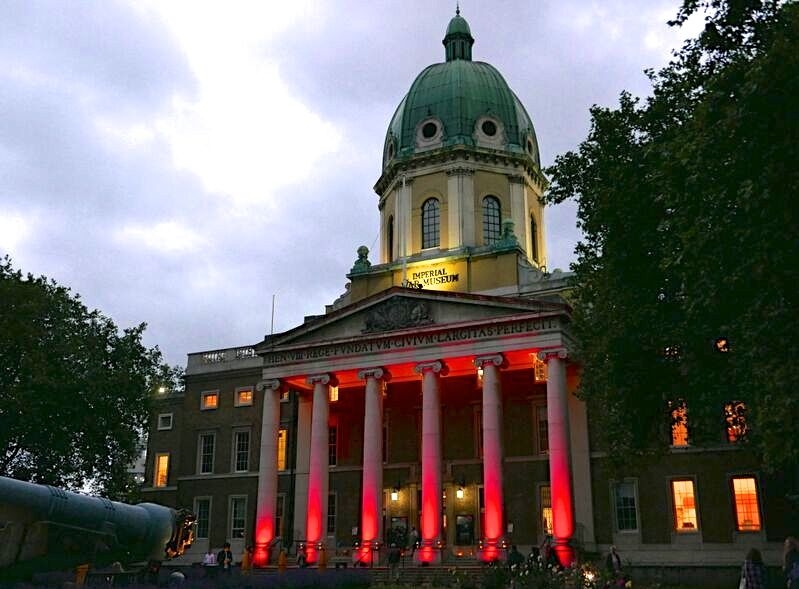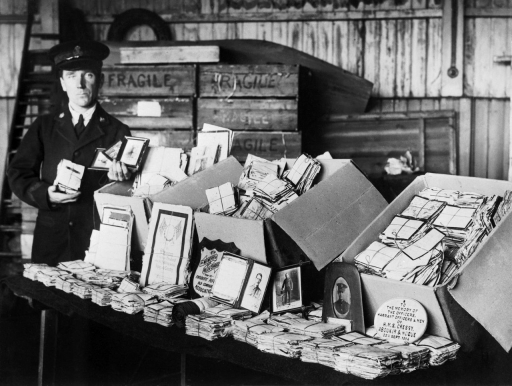The Imperial War Museum was founded on 5 March 1917 when the British War Cabinet approved a proposal by the industrialist and MP, Sir Alfred Mond, for a national museum to record events taking place while the First World War was still being fought.
The aim was to collect and display materials commemorating the sacrifices of all sections of society, civilian and military.
‘Since its establishment, people have entrusted IWM with their stories of war from 1917 to the present day, in the knowledge it will continue to share these stories with future generations,’ the museum says.
Some of the earliest items from its collections, including poignant letters written during the Great War, have been released for the Centenary.
The outcome of WW1 was still far from certain at the time of the Imperial War Museum’s creation. Deadlock continued on the Western Front, Britain faced a renewed threat from German U-boats, and the United States wasn’t quite yet in the war.

British tanks and troops parade past the Bethlem Royal Hospital in Lambeth Road, London, at the end of the First World War. The building would later become the Imperial War Museum, now IWM London (Photo © IWM HU 51923)
The Imperial War Museum was initially housed at the Crystal Palace in South London, and later South Kensington, before moving to Lambeth Road which has been its permanent home since 1936.
Its name was changed from ‘The National War Museum’ in November 1917 to meet a request that India, then under British rule, and the self-governing dominions of Australia, Canada, New Zealand and South Africa ‘would feel that their part in the war would be permanently commemorated in the centre of the Empire’.
100 years on, IWM leads a worldwide centenary partnership of more than 3,000 not-for-profit organisations holding cultural events throughout the First World War centenary period.
IWM now has five branches, attracting more than two million visitors a year. They include IWM Duxford, the aviation museum near Cambridge which started out as a Royal Flying Corps airfield in the First World War.
In June, a major retrospective of works by the war artist Wyndham Lewis will open at IWM North, the museum’s Manchester branch, as part of the IWM Centenary programme.
 The Imperial War Museum, London, pictured during the ‘Night Before the Somme’ commemorations, 30 June 2016 (Photo: Centenary News)
The Imperial War Museum, London, pictured during the ‘Night Before the Somme’ commemorations, 30 June 2016 (Photo: Centenary News)
Diane Lees, Director General of IWM, comments: “In addition to commemorating our centenary, we will also look beyond our own past and to today’s conflict – just as the founders of IWM reflected upon the conflict we now know as the First World War.
“As IWM begins its second century, it is important to give a voice to those who are experiencing conflict now as well as those from the past 100 years.”
For more information about the Centenary, including ‘Letters to Loved Ones’ from the First World War, see the IWM website.
Archive images courtesy of Imperial War Museums, © IWM Q 24093 & HU 51923
Source: IWM
Posted by: CN Editorial Team
